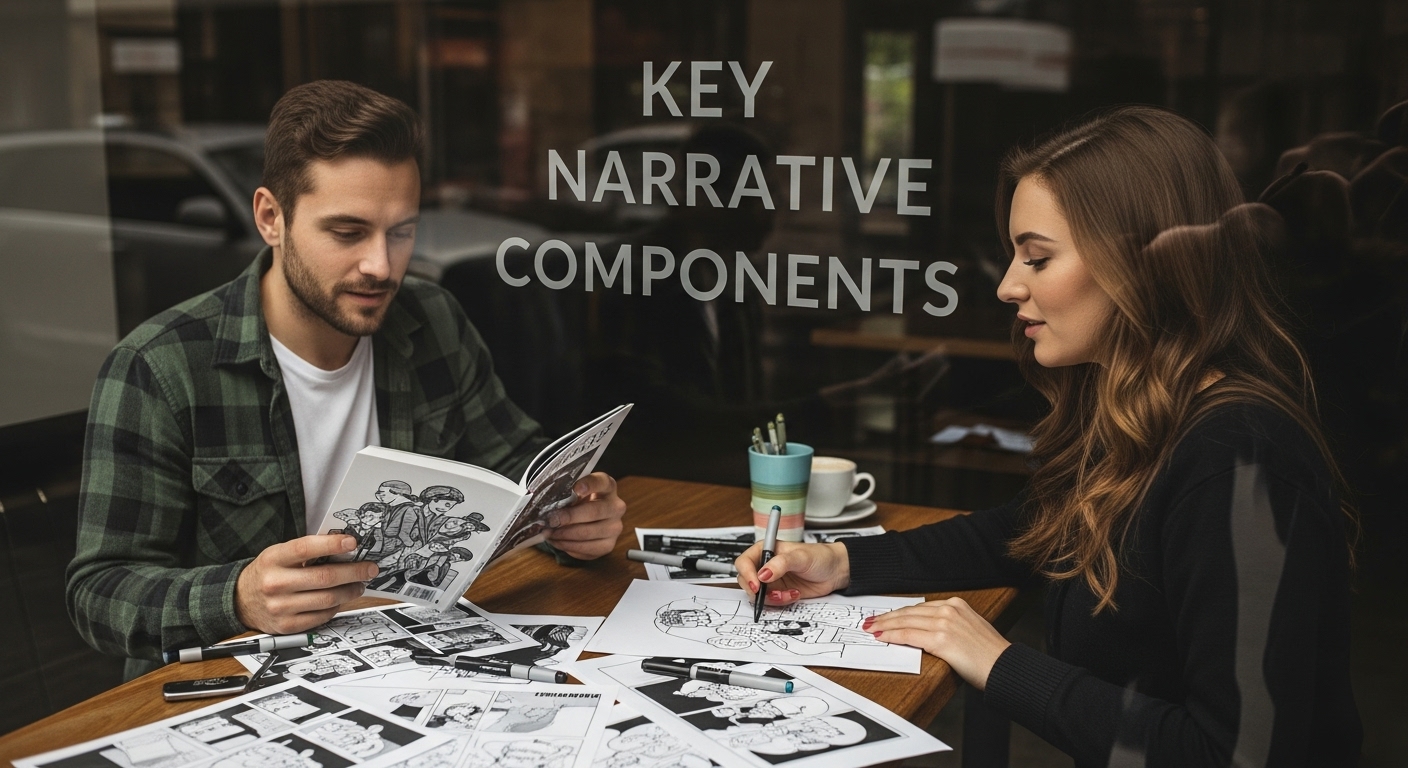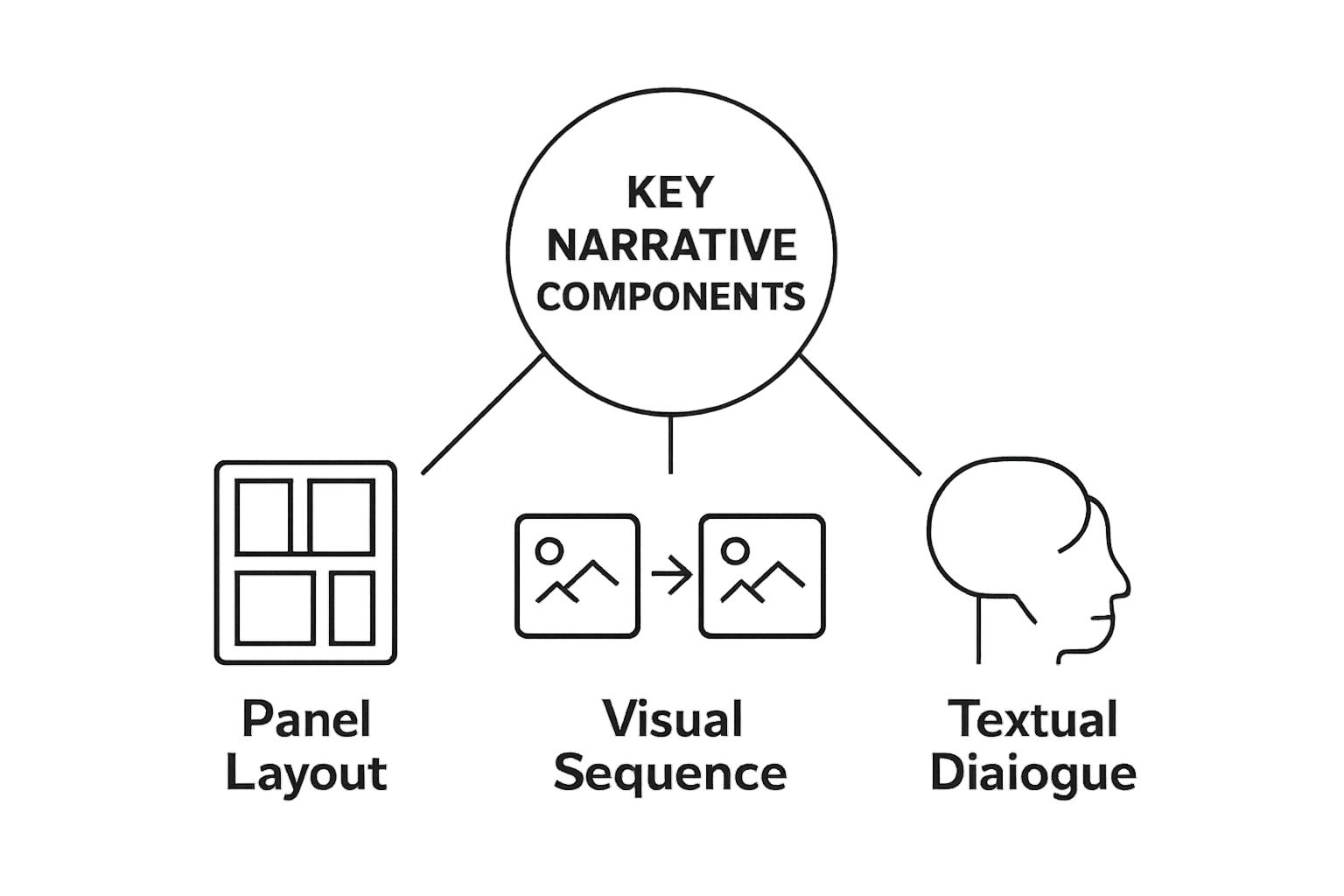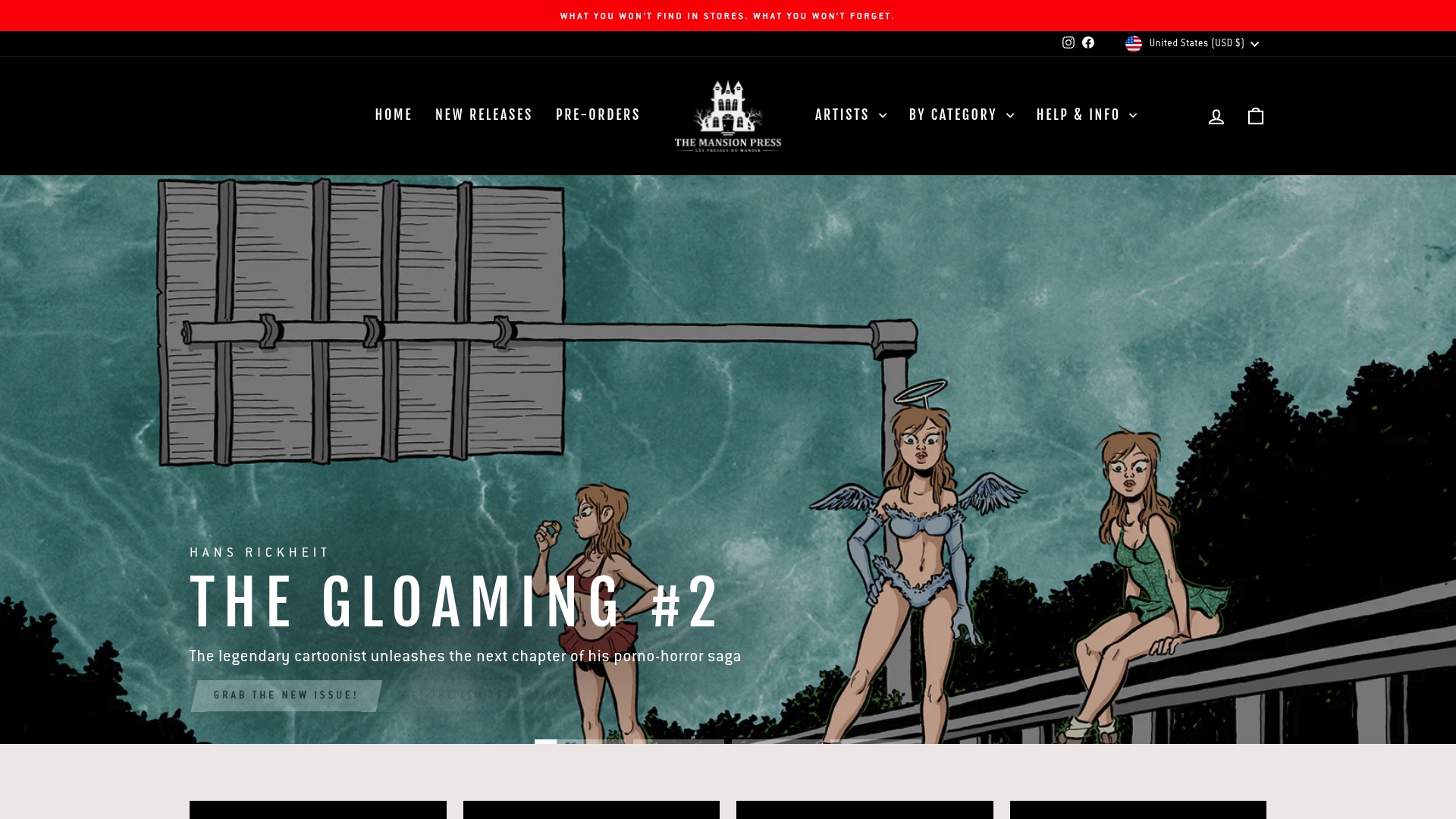Understanding Narrative Structure in Graphic Novels
Graphic novels completely transform how stories are told. They use both images and words, which means you get a totally different reading experience compared to regular books. But most people miss what makes them so unique. Research shows that every panel and page layout actually acts as its own storytelling language, letting readers interpret emotion and meaning in ways that text alone cannot. What really sets graphic novels apart is how the structure itself—those boxes, lines, and visual cues—does the heavy lifting, reshaping not just the story but how you feel it as you read.
Table of Contents
- What Is Narrative Structure In Graphic Novels?
- Why Narrative Structure Matters In Graphic Storytelling
- Key Components Of Graphic Novel Narrative Structure
- How Narrative Structure Shapes Reader Experience
- Real-World Examples Of Narrative Structure In Graphic Novels
Quick Summary
| Takeaway | Explanation |
|---|---|
| Graphic novels blend visual and textual elements. | This combination creates complex narratives that engage readers uniquely, unlike traditional novels. |
| Panel layout affects storytelling rhythm. | The arrangement of panels influences the pace and emotional tone, guiding readers’ experiences through the narrative. |
| Visual transitions enhance narrative flow. | Effective transitions between panels help convey the story’s progression and deepen reader interpretation. |
| Non-linear storytelling offers unique engagement. | Graphic novels can manipulate time and perspective to challenge expectations, inviting readers to actively construct their understanding. |
| Narrative structure is an artistic expression. | Beyond mechanics, narrative structure showcases the creator’s artistry, allowing for multiple interpretations and deeper engagement. |
What is Narrative Structure in Graphic Novels?
Narrative structure in graphic novels represents the sophisticated framework through which visual storytelling unfolds, combining sequential art, panel composition, and storytelling techniques to create a unique narrative experience. Unlike traditional novels, graphic novels leverage both visual and textual elements to construct complex narratives that engage readers through intricate storytelling methods.
Visual Storytelling Foundations
Graphic novels utilize a multilayered approach to narrative construction. The narrative structure emerges through panel sequences, visual transitions, and the deliberate arrangement of images that communicate story progression. Artists strategically design each panel to convey specific emotional and narrative information, creating a visual language that transcends traditional linear storytelling.
According to Barbara Postema’s research, graphic novels communicate meaning through intricate pictorial qualities, where each panel serves as a fragment contributing to the broader narrative. This approach allows readers to interpret story elements through visual cues, spatial relationships, and implied actions.
Key Narrative Components
The narrative structure in graphic novels typically encompasses several critical elements:
- Panel Layout: Determines story rhythm and emotional pacing
- Visual Sequence: Guides reader interpretation and story progression
- Textual Dialogue: Provides context and character development
- Graphic Style: Communicates mood and narrative tone
These components work synergistically to create a rich, immersive storytelling experience that goes beyond traditional narrative mediums.
To help clarify the critical components that form the backbone of narrative structure in graphic novels, the following table summarizes each key element and its function within visual storytelling.
| Component | Function |
|---|---|
| Panel Layout | Determines story rhythm and emotional pacing |
| Visual Sequence | Guides reader interpretation and story progression |
| Textual Dialogue | Provides context and character development |
| Graphic Style | Communicates mood and narrative tone |
| Panel Composition | Sets visual storytelling rhythm and emotional intensity |
| Visual Transitions | Creates narrative flow and interpretive spaces between images |
| Textual Integration | Provides contextual depth and character development |
Graphic novelists carefully choreograph visual elements to guide reader perception, using techniques like panel size variation, perspective shifts, and visual metaphors to enhance narrative complexity.
By understanding narrative structure in graphic novels, readers can appreciate the intricate artistry involved in transforming sequential images into powerful, emotionally resonant storytelling experiences.

Why Narrative Structure Matters in Graphic Storytelling
Narrative structure is the critical backbone that transforms graphic storytelling from mere sequential images into powerful, emotionally resonant experiences. It serves as the fundamental mechanism through which complex stories are communicated, interpreted, and understood within the graphic novel medium.
Communicating Complex Narratives
Graphic storytelling relies on narrative structure to translate intricate emotional and plot experiences across visual and textual dimensions. Unlike traditional linear storytelling, graphic novels leverage spatial relationships and visual composition to convey meaning beyond written text. Each panel becomes a strategic communication tool, carefully designed to guide reader perception and emotional engagement.
Computational research on narrative knowledge graphs suggests that effective narrative structures operate through hierarchical frameworks, breaking down storytelling into interconnected semantic layers that capture subtle narrative nuances and relationships between story elements.
Emotional and Cognitive Engagement
The narrative structure in graphic storytelling performs multiple sophisticated functions:
- Provides cognitive scaffolding for understanding story progression
- Creates emotional resonance through strategic visual sequencing
- Allows non-linear storytelling techniques that challenge traditional narrative expectations
- Enables complex character development through visual and textual interactions
Graphic novelists manipulate narrative structure to create immersive experiences that transcend traditional storytelling boundaries.
The table below compares how specific narrative structure techniques in graphic novels contribute to both cognitive and emotional engagement, highlighting their unique effects on the reader experience.
| Technique | Cognitive Impact | Emotional Impact |
|---|---|---|
| Panel Layout | Organizes visual flow, supports comprehension | Shapes pacing, sets emotional tone |
| Visual Sequencing | Guides temporal understanding, aids story construction | Builds anticipation and tension |
| Perspective Shifts | Offers multiple viewpoints, challenges interpretation | Encourages empathy, deepens connection |
| Visual Metaphors | Encourages abstract reasoning | Conveys complex feelings and mood |
| Non-linear Storytelling | Engages active processing, challenges expectations | Enhances immersion, provokes emotional response |
| By carefully orchestrating panel layout, visual transitions, and narrative pacing, artists can communicate complex emotional landscapes that resonate deeply with readers. |
Narrative Structure as Artistic Expression
Beyond mere storytelling mechanics, narrative structure represents an artistic expression in itself. Graphic novelists use structural techniques like panel fragmentation, perspective shifts, and visual metaphors to create multilayered narrative experiences that invite multiple interpretations.
Ultimately, narrative structure transforms graphic novels from simple illustrated stories into sophisticated storytelling mediums that challenge, provoke, and engage readers on profound intellectual and emotional levels.
Key Components of Graphic Novel Narrative Structure
Graphic novel narrative structure represents a sophisticated interplay of visual and textual elements that transform sequential images into compelling storytelling experiences. These components work together to create meaningful narratives that transcend traditional literary boundaries.
Spatial and Temporal Sequencing
The core of graphic novel narrative structure lies in its unique approach to spatial and temporal representation. Unlike traditional novels, graphic novels manipulate time and space through panel composition, allowing for complex narrative techniques that compress, expand, or fragment storytelling moments.
According to research from the City University of New York, narrative structure in graphic novels operates through intricate visual languages that communicate meaning beyond linear text, utilizing page layout and panel transitions as critical storytelling mechanisms.
Critical Narrative Elements
Graphic novels integrate several fundamental components to construct their narrative structure:
- Panel Composition: Determines visual storytelling rhythm and emotional intensity
- Visual Transitions: Create narrative flow and interpretive spaces between images
- Graphic Style: Communicates mood, tone, and thematic undertones
- Textual Integration: Provides contextual depth and character development
These elements function synergistically, allowing graphic novelists to create multilayered narrative experiences that engage readers through visual and textual interactions.
 Each component serves a specific narrative purpose, transforming sequential images into complex storytelling mechanisms.
Each component serves a specific narrative purpose, transforming sequential images into complex storytelling mechanisms.
Narrative Construction Techniques
Graphic novelists employ sophisticated techniques to construct narrative structure, including panel fragmentation, perspective manipulation, and visual metaphors. These strategies enable creators to communicate complex emotional landscapes, challenge narrative expectations, and invite multiple interpretative possibilities.
By understanding these key components, readers can appreciate graphic novels as sophisticated storytelling mediums that offer rich, nuanced narrative experiences beyond traditional literary formats.
How Narrative Structure Shapes Reader Experience
Narrative structure in graphic novels serves as a profound psychological interface between the creator’s vision and the reader’s interpretative journey. It functions as an intricate mechanism that guides perception, emotional engagement, and cognitive processing of visual storytelling experiences.
Cognitive Engagement Dynamics
Readers interact with graphic novels through complex cognitive processes that go beyond passive consumption. Narrative structure acts as a cognitive scaffolding, enabling readers to navigate complex visual landscapes by providing strategic visual cues, panel transitions, and interpretative spaces that invite active mental participation.
Computational research on narrative knowledge graphs reveals that effective narrative structures operate through hierarchical frameworks, breaking down storytelling into interconnected semantic layers that facilitate deeper reader comprehension and emotional resonance.
Emotional Interpretation Mechanisms
Graphic novel narrative structures generate emotional experiences through several sophisticated techniques:
- Create anticipatory tension through strategic panel sequencing
- Modulate emotional intensity through visual composition
- Establish intimate character connections via visual storytelling
- Communicate complex emotional states through non-verbal visual metaphors
These mechanisms transform reading from a linear process into an immersive, multilayered emotional journey. Readers are not merely consuming a story but actively constructing meaning through visual and textual interactions.
Psychological Narrative Processing
Narrative structure fundamentally influences how readers psychologically process and internalize storytelling experiences. By manipulating visual rhythm, perspective shifts, and spatial relationships, graphic novelists create narrative structures that challenge traditional storytelling expectations and provoke deep psychological engagement.
Ultimately, narrative structure transcends mechanical storytelling, becoming a sophisticated communication tool that bridges creator intention and reader interpretation, inviting profound, personal storytelling experiences.
Real-World Examples of Narrative Structure in Graphic Novels
Real-world graphic novels demonstrate the profound complexity and versatility of narrative structure, showcasing how creators manipulate visual storytelling techniques to convey complex emotional and intellectual experiences. These examples reveal the intricate ways narrative structure transcends traditional storytelling boundaries.
Complex Character Network Dynamics
Some graphic novels employ sophisticated narrative structures that map intricate character relationships and social dynamics. Narrative complexity emerges through strategic visual and textual interactions that reveal deeper psychological and social connections beyond linear plot progression.
Research examining the character network in the bande dessinée ‘Thorgal’ illustrates how graphic novels can construct complex social networks that mirror real-world relational structures, using visual storytelling to map character interactions and narrative progression.
Innovative Narrative Techniques
Graphic novelists employ multiple innovative narrative structure approaches:
- Nonlinear temporal sequencing that challenges traditional storytelling
- Multilayered visual metaphors representing psychological states
- Fragmented panel compositions that invite multiple interpretations
- Experimental page layouts that disrupt conventional reading patterns
These techniques transform narrative structure from a mere storytelling mechanism into a sophisticated artistic expression that engages readers on multiple cognitive and emotional levels.
Symbolic Reasoning and Visual Storytelling
Advanced narrative structures in graphic novels enable complex symbolic reasoning. By decomposing narrative content into interconnected semantic layers, creators construct rich, multidimensional storytelling experiences that invite deep reader engagement.
Through careful manipulation of visual and textual elements, graphic novelists transform narrative structure into a powerful communication medium that transcends traditional literary and artistic boundaries, offering readers profound, immersive storytelling experiences.
Bring Narrative Structure to Life with Exclusive Artbooks and Graphic Novels
Your journey into the intricate world of narrative structure in graphic novels does not have to end with theory. If you want to see how visionary creators use panel layout, visual storytelling, and unique composition to deliver immersive experiences, now is the time to explore rare and original works from independent artists and innovative storytellers. Whether you are seeking inspiration, collectible editions, or the next addition to your bookshelf, discover limited releases and collector’s items that turn complex narrative techniques into unforgettable art.

Unlock the creative potential you just read about by visiting The Mansion Press website. Dive into our curated collection of artbooks, comics, and original artwork that showcase the power of narrative structure. Shop now for exclusive editions available only to early collectors and explore upcoming pre-orders before they sell out. Start your collection and let the best in visual storytelling inspire you today.
Frequently Asked Questions
What is narrative structure in graphic novels?
Narrative structure in graphic novels refers to the framework that combines visual storytelling, panel composition, and storytelling techniques to create engaging narratives that go beyond traditional writing.
How do panel layouts affect storytelling in graphic novels?
Panel layouts determine the rhythm and emotional pacing of the story, guiding the reader’s interpretation and creating a flow that enhances the overall narrative experience.
What role do visual transitions play in graphic novels?
Visual transitions create narrative flow and provide interpretative spaces between images, helping to convey deeper meaning and context within the story progression.
Why is emotional engagement important in graphic novels?
Emotional engagement is crucial as it allows readers to connect with characters and themes more deeply, transforming the reading experience into an immersive journey that resonates on both cognitive and emotional levels.

